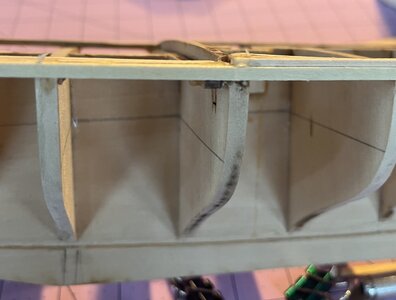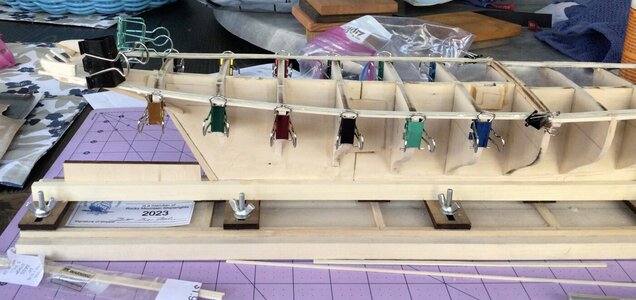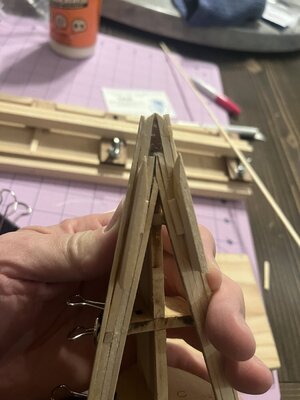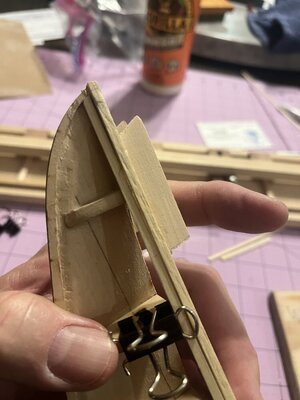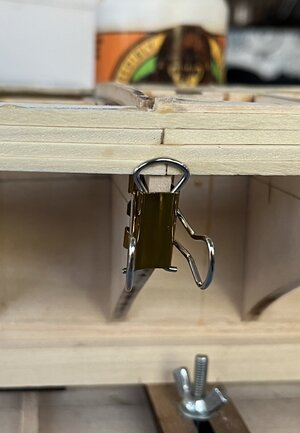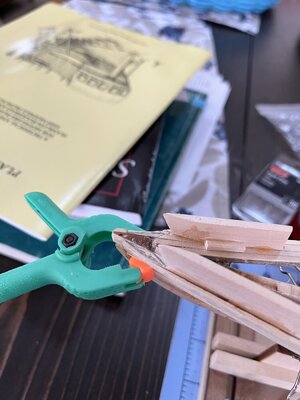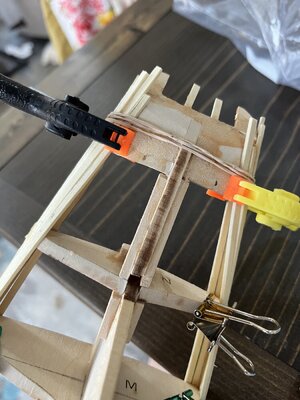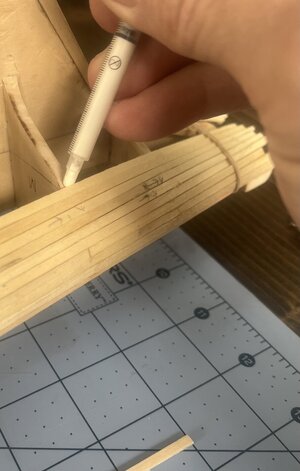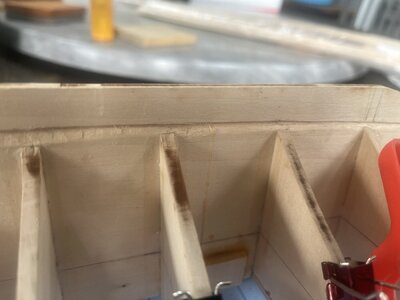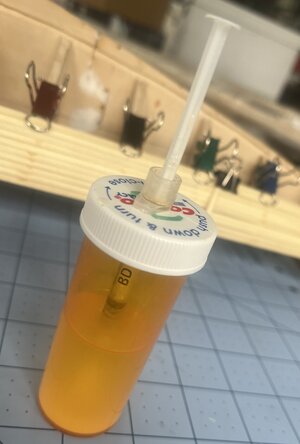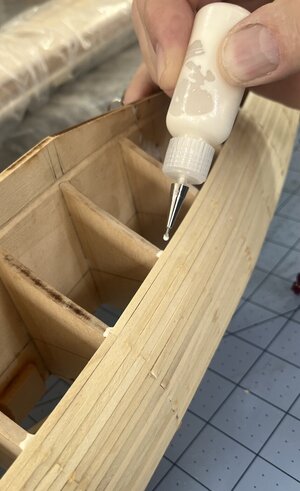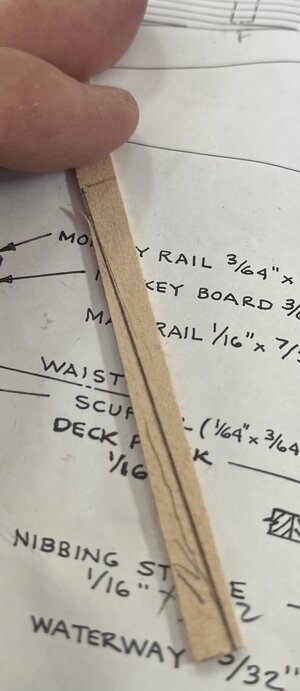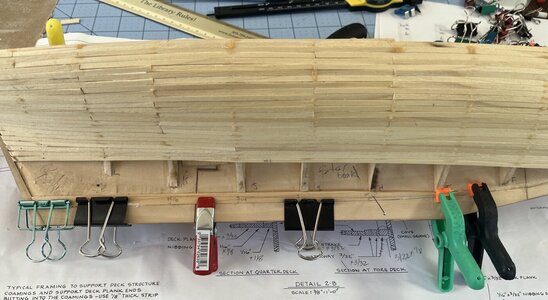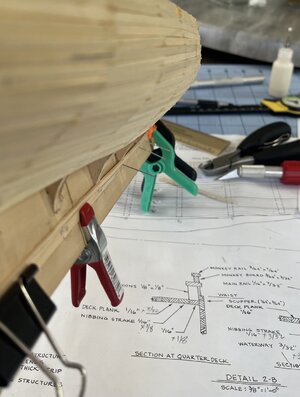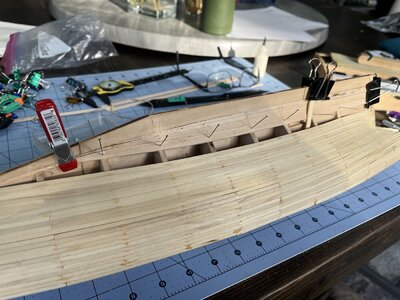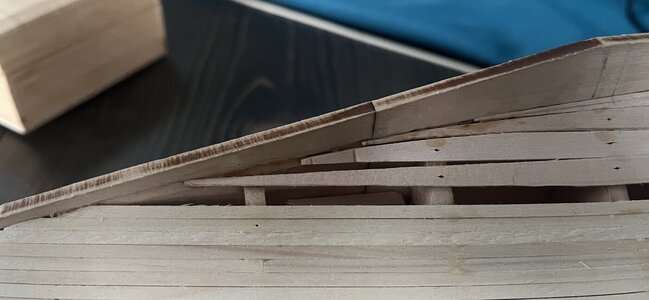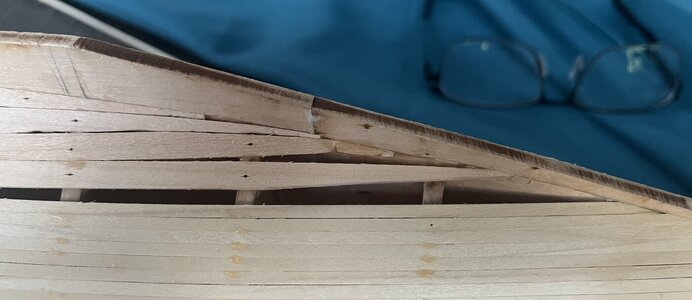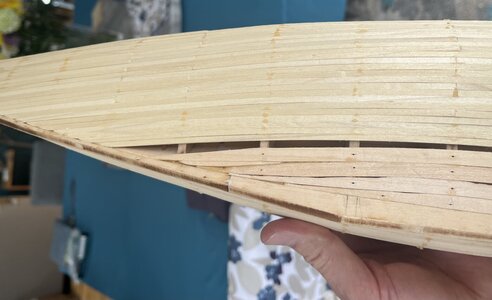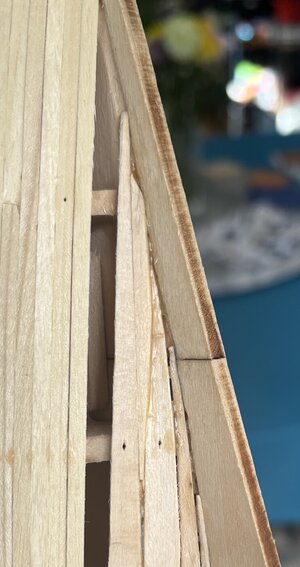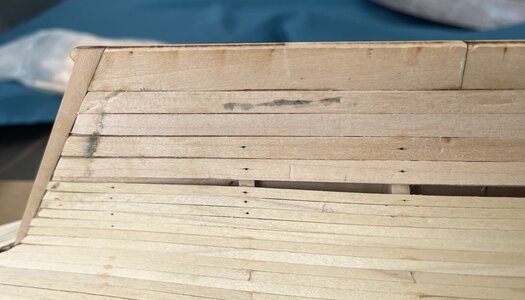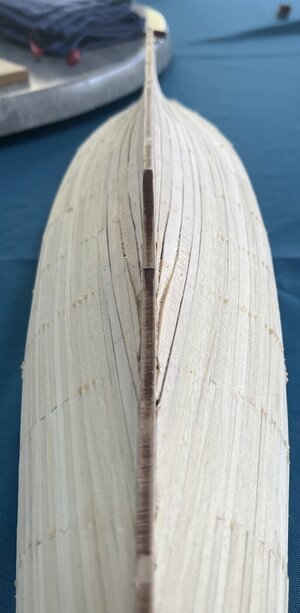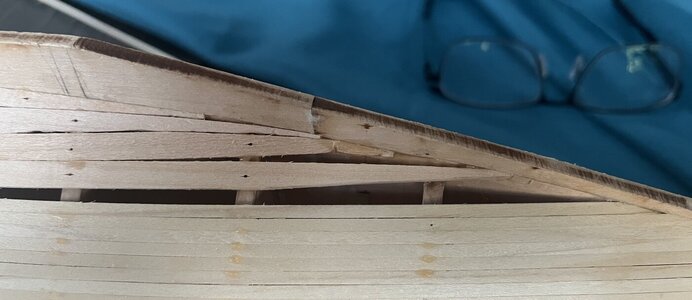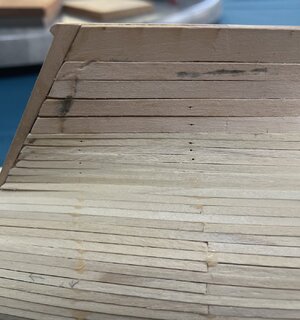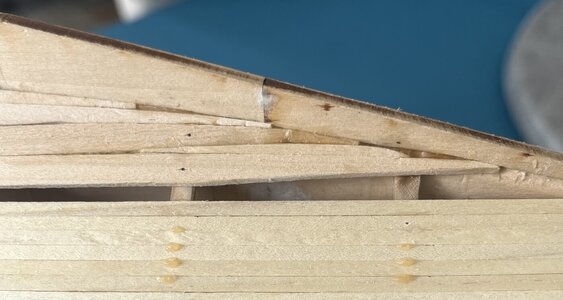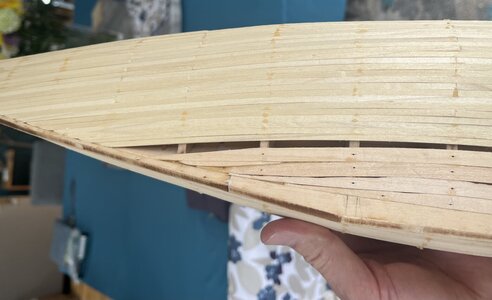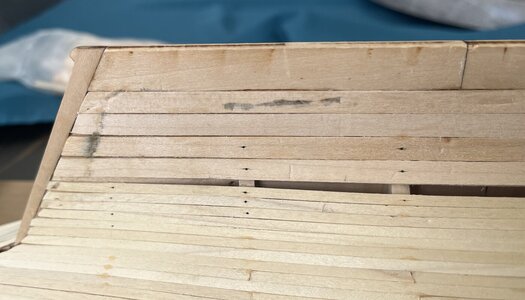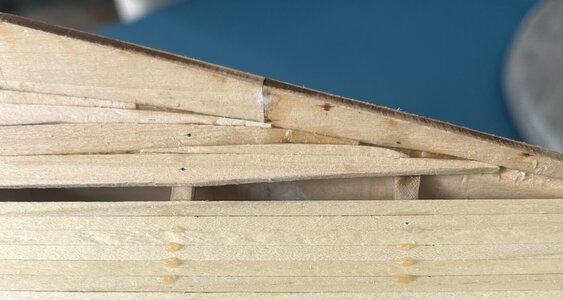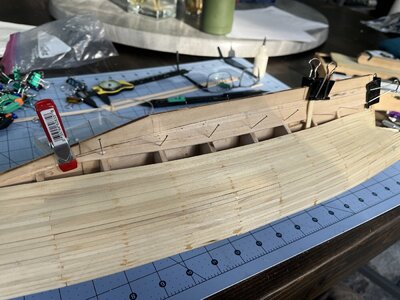- Joined
- Apr 8, 2023
- Messages
- 174
- Points
- 103

Decided to take the plunge and start a log. I’m going to continue to have questions and a build log seems to be the best way to get them answered. So here goes.
I’ve been working on my Bluenose (1/64; Model Shipways) since October of 2000 - yes almost 24 years. I started it after a divorce but then within a month or so of starting it, I put it away until last month. It survived multiple moves (including Denver to Phily and back to Denver then a few moves within the Denver area). It had survived, but there was some damage that would need to be repaired.
I don’t have pictures of how I found it when I re-started it, and very few detailing what I’ve done so far. I hope to change that, but just how detailed this log will be, at this point, who knows.
Quick recap…
Before putting it away in October of 2000, I spent around 6 hours on it including an inventory of pieces, putting the keel together, installing the sternpost, cutting the rabbet, tapering the stern, and installing the bulkheads.
On 3/15/23 I pulled it out and started working on it. Or wanted to work on it, but it took a while to repair the damage and figure out what I had actually done on it . The damage that needed repair was rebuilding basically everything after bulkhead N as it was broken off with one half of bulkhead O completely missing.
Once the repairs were done, I created and installed the stern blocks. The bulkheads were a bit warped/curved so I pretty much sprayed the whole thing with hot water and used a temporary batten along each slide in an attempt to straighten everything out. All in all, I was pleased with what I was able to do. It began to look like I’d be able to save it.
As to why I decided after so long to work on it again, it was because I bought a place in Puerto Vallarta last year and after a couple of trips all of my must do honey do’s were done. And even though we’re only a block off the malecón and the beach, I found myself getting bored and needing something do. As I told all my friends, you can only drink so much beer on the beach. My quick search of hobbies brought me fairly quickly to my Bluenose, or actually model ship building as my first thought was to work on the Bluenose in the States, and bring another one to Mexico on our next trip.
My wife is fully supportive of my new old hobby and when I told her I’d like to build something with a Mexican twist, SHE started looking for my next build. We landed on a pirate ship as Vallarta and the Bay of Banderas was known for its pirates at one time. Heck there is a dinner cruise each night in the Bay on a pirate ship. It’s cannons shoot off fireworks nightly around 9pm that we can see from our balcony. After looking at pirate ships, we decided on Buccaneer from Occre. Yeah I know it has nothing to do with Mexican pirates, but it “looks” like a pirate ship. So it is now sitting on my shelf waiting for my return to Vallarta in early May.
Ok, back to the Bluenose.
I skipped over framing the transom and added the horn timbers and decided to reshape my stern blocks (wood puddy and sanding). I then added the waterways and decided to cut off the bulkhead stanchions. In retrospect, I wish I would have done the inner waterways first and then added the small pieces in between each bulkhead. Live and learn. I created knightheads/chaffing blocks.
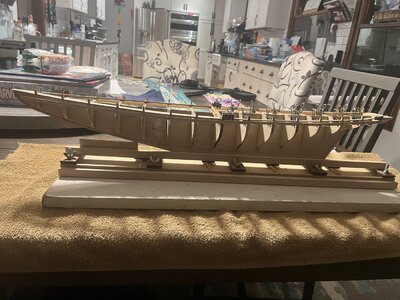
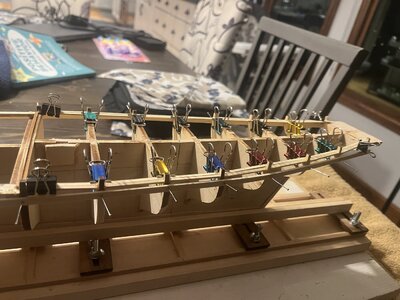
After a good sanding, I tackled framing the transom. And after I was done with it, I felt the overall shape of the transom wasn’t right and worked on it a third time. More puddy and sanding. The third time was really the charm in my opinion. It’s not perfect, but it matches the shape of the ship.
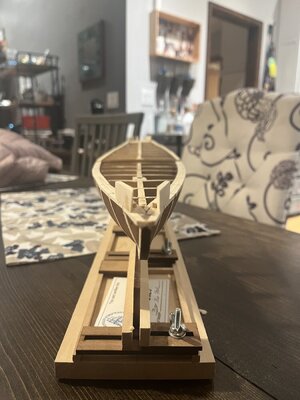
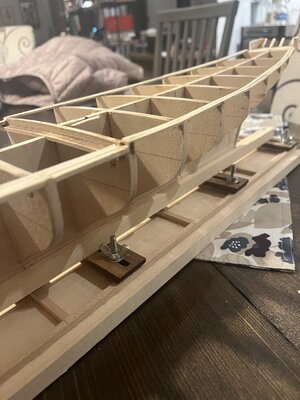
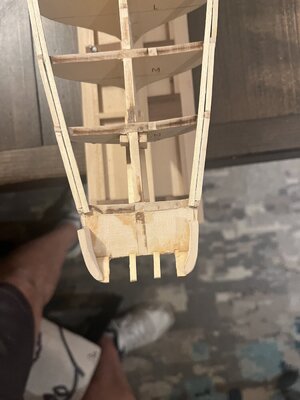
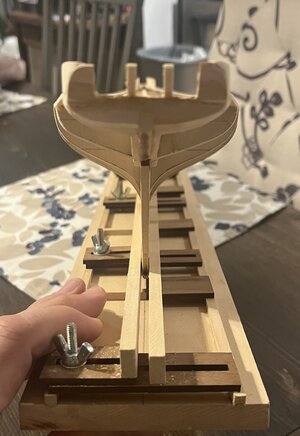
In all, I’ve probably spent about 30 hours since pulling it out of moth balls (ok, it was just sitting on the freezer in the basement) to get to the point I’m at now. So maybe about 36 hours in total.
The last day or so I’ve been trying to figure out if I should begin planking the hull or painting the waterways. I decided to plank the hull. I read a bunch of build logs and decided to start from the waterways and move down. In order to do that, I needed some 1/16 x 1/16 stock as the quarterdeck is that much different from the foredeck. And of course the kit does have any, so my working time today was eaten up by having to run to the store and by writing this. But I should be ready to start planking tomorrow.
I’ve been working on my Bluenose (1/64; Model Shipways) since October of 2000 - yes almost 24 years. I started it after a divorce but then within a month or so of starting it, I put it away until last month. It survived multiple moves (including Denver to Phily and back to Denver then a few moves within the Denver area). It had survived, but there was some damage that would need to be repaired.
I don’t have pictures of how I found it when I re-started it, and very few detailing what I’ve done so far. I hope to change that, but just how detailed this log will be, at this point, who knows.
Quick recap…
Before putting it away in October of 2000, I spent around 6 hours on it including an inventory of pieces, putting the keel together, installing the sternpost, cutting the rabbet, tapering the stern, and installing the bulkheads.
On 3/15/23 I pulled it out and started working on it. Or wanted to work on it, but it took a while to repair the damage and figure out what I had actually done on it . The damage that needed repair was rebuilding basically everything after bulkhead N as it was broken off with one half of bulkhead O completely missing.
Once the repairs were done, I created and installed the stern blocks. The bulkheads were a bit warped/curved so I pretty much sprayed the whole thing with hot water and used a temporary batten along each slide in an attempt to straighten everything out. All in all, I was pleased with what I was able to do. It began to look like I’d be able to save it.
As to why I decided after so long to work on it again, it was because I bought a place in Puerto Vallarta last year and after a couple of trips all of my must do honey do’s were done. And even though we’re only a block off the malecón and the beach, I found myself getting bored and needing something do. As I told all my friends, you can only drink so much beer on the beach. My quick search of hobbies brought me fairly quickly to my Bluenose, or actually model ship building as my first thought was to work on the Bluenose in the States, and bring another one to Mexico on our next trip.
My wife is fully supportive of my new old hobby and when I told her I’d like to build something with a Mexican twist, SHE started looking for my next build. We landed on a pirate ship as Vallarta and the Bay of Banderas was known for its pirates at one time. Heck there is a dinner cruise each night in the Bay on a pirate ship. It’s cannons shoot off fireworks nightly around 9pm that we can see from our balcony. After looking at pirate ships, we decided on Buccaneer from Occre. Yeah I know it has nothing to do with Mexican pirates, but it “looks” like a pirate ship. So it is now sitting on my shelf waiting for my return to Vallarta in early May.
Ok, back to the Bluenose.
I skipped over framing the transom and added the horn timbers and decided to reshape my stern blocks (wood puddy and sanding). I then added the waterways and decided to cut off the bulkhead stanchions. In retrospect, I wish I would have done the inner waterways first and then added the small pieces in between each bulkhead. Live and learn. I created knightheads/chaffing blocks.


After a good sanding, I tackled framing the transom. And after I was done with it, I felt the overall shape of the transom wasn’t right and worked on it a third time. More puddy and sanding. The third time was really the charm in my opinion. It’s not perfect, but it matches the shape of the ship.




In all, I’ve probably spent about 30 hours since pulling it out of moth balls (ok, it was just sitting on the freezer in the basement) to get to the point I’m at now. So maybe about 36 hours in total.
The last day or so I’ve been trying to figure out if I should begin planking the hull or painting the waterways. I decided to plank the hull. I read a bunch of build logs and decided to start from the waterways and move down. In order to do that, I needed some 1/16 x 1/16 stock as the quarterdeck is that much different from the foredeck. And of course the kit does have any, so my working time today was eaten up by having to run to the store and by writing this. But I should be ready to start planking tomorrow.



